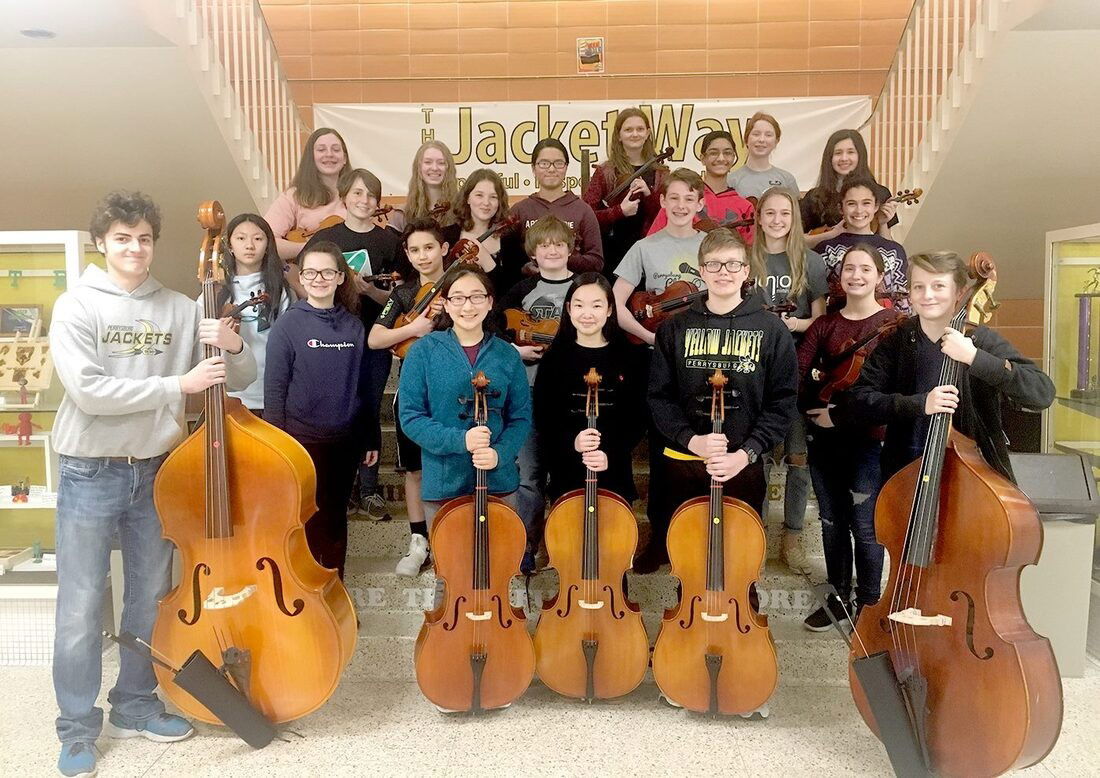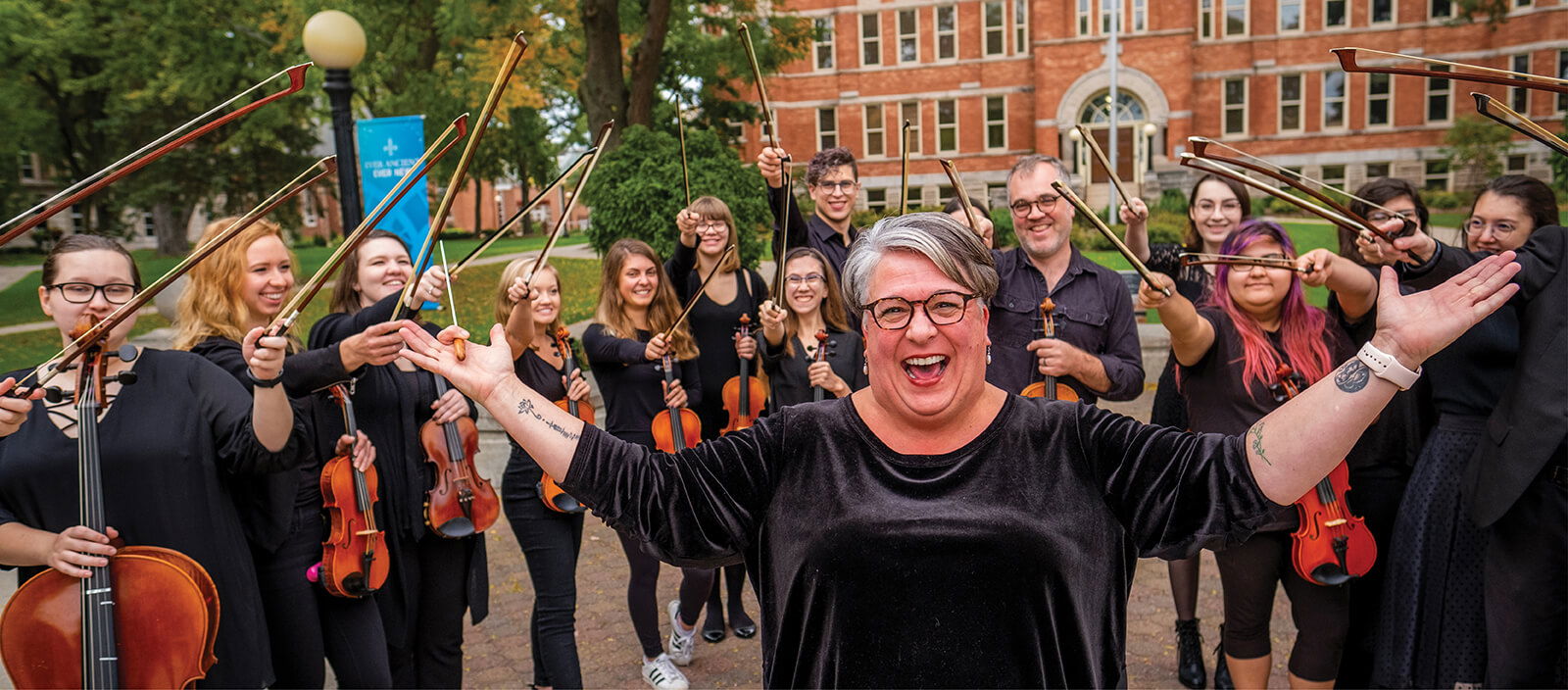Reigniting Passion in a String Orchestra After a Break

The first rehearsal after a break, such as the Christmas holiday, can be a challenging time for a string orchestra. Musicians have had time away from their instruments, and re-establishing focus, enthusiasm, and dedication to the music requires careful attention. As the conductor, you play a pivotal role in motivating and inspiring the orchestra to return to their highest level of performance. Here are some effective strategies for leading your string orchestra back to peak form after a break:
1. Create a Welcoming and Energizing Atmosphere
The first rehearsal back should be filled with warmth and positive energy. Begin by welcoming your musicians back with genuine enthusiasm, acknowledging their return after the break. Take a moment to reconnect with your orchestra as a community, letting them know how much their presence is valued. This helps create a supportive environment where the musicians feel encouraged and appreciated. A positive, open atmosphere sets the tone for a productive and enjoyable rehearsal.
2. Remind the Orchestra of Their Shared Goals
After a break, the orchestra may need a gentle reminder of the collective goals they are working toward. Whether it’s preparing for an upcoming performance, fine-tuning a piece, or working on specific technical elements, it’s important to revisit the big picture. Talk about the upcoming concert, the significance of the pieces, and the impact their music will have on the audience. By reestablishing the purpose behind the work, you help the musicians understand how their individual efforts contribute to the ensemble’s overall success.
For many songs that you might play, it might help to take the time to present the history, meaning, and purpose behind each piece of music, depending on the interest of the ensemble. This would tend to establish an intellectual and emotional connection to the material, especially if you tie it back to the overall theme of the performance.
For example, you could discuss how the pieces reflect different emotions and the way that those emotions are expressed musically. What key or mode did the composer / arranger use? What time signature and tempo was chosen? Did the arranger do something different from the original to add a bit of his or her own character?
You could also reveal the story or circumstance surrounding the origin of the piece. Was it a result of a personal triumph or tragedy in the composer’s life? Was it the result of a national conflict or natural disaster in which the composer was involved?
Lastly, you could discuss how the piece is intended to affect the audience. How is it supposed to make them feel, or think, or act?

3. Set Realistic, Achievable Short-Term Goals
While the orchestra may be eager to dive into complex pieces right away, it’s important to start with clear, achievable goals for the first rehearsal back. Set specific short-term objectives that will help everyone ease back into their playing. This could include working on particular sections of a piece, revisiting challenging passages, or focusing on sound quality and tone production. Focusing on small, attainable goals ensures the orchestra gains a sense of accomplishment early on, which can boost motivation and help restore confidence in their playing.
If possible, the students should be included in choosing the music for the spring concert or any other upcoming performance. The way they are included could involve a number of things, such as:
- Suggestions for music itself. And this can be done a number of ways.
The first would involve offering a selection of music from the orchestra’s existing library. Often, this would make up the majority of, if not the whole of, the next concert. These would be pieces that probably hadn’t been played for several years, unless, of course, there is a favorite among players and audience alike that could be played with no objections.
Suggestions for new pieces could be taken after those available pieces are chosen. They might be made from a list that the director has put together, which would reflect his or her understanding of the degree of complexity of the music and how well that difficulty level matches the ability of the orchestra.
Members of the orchestra could also make suggestions off the top of their heads of pop tunes, new or old, that they like. That would involve a little more work on the part of the conductor, but it would be worth it if the ensemble could achieve a goal that they created.
Salt Cellar Creations can do a custom arrangement for you for far less than a commissioned piece would cost. Contact Us for details.
- Location for a concert, other than the usual site. That would mean extra work, but it might be possible for leaders in the ensemble to do some of that legwork.
- Who might be featured for a solo or small group performance within a concert piece
The director would, of course, lay out some ground rules for choosing music and other things, such as:
- Take the process seriously. There are always at least a couple of members in any music ensemble who tend to take things too lightly, but offering suggestions for the next concert is not a good place to clown around. Remind the members that unless they take the process seriously, as mature people would, the director will be forced to treat them as children and tell then everything they need to do.
- Encourage “out-of-the-box” suggestions, but remind them that the idea must be thought out, at least the more important parts. There would need to be basic answers for each of the journalist’s six questions – Who?, What?, Where?, When?, How?, and Why? For example, if a member suggests a concert on the roof of the building, don’t dismiss the idea out of hand. Ask whoever made the suggestion the six questions. If that person can’t answer them right away, give a deadline within which they would need to be answered.
- Respect the suggestions of others. Here’s a good time to practice the Golden Rule. And besides, the suggestion that someone ridicules today may be the one that he or she must participate in later.

4. Use Positive Reinforcement and Celebrate Progress The picture above illustrates the two main ways that people can be externally motivated. The illustration is very simplified, but you can see both ways presented there. The stick represents threats of punishment or other harm. This, of course is rarely recommended for any situation, and never for a music ensemble.
The carrot represents constructive methods, positive reinforcement being among the best of them.
Encouragement goes a long way in re-building momentum. As the conductor, take time to acknowledge individual and group progress, even for the smallest improvements. If a section has worked particularly hard to smooth out a passage or if a player shows notable improvement, be sure to highlight it. Publicly recognize these achievements, as this not only motivates the individual musicians but also fosters a sense of pride and unity within the group. Praise boosts morale and encourages a continued commitment to excellence.
Sometimes orchestra members don’t always recognize the things they’ve done right, or better, especially after having been on a break. You could compare their achievements, large or small, to other orchestras in general, saying, “Many other orchestras wouldn’t have done that correctly so soon after a break”.
While bribery is not a favorable way to motivate people, students in particular, rewarding positive behavior can be beneficial to the improvement of any musical ensemble. A “Musician of the Week” (or more, if the orchestra is large).
5. Start with Engaging and Fun Warm-Ups
After a break, it’s important to get the musicians back into the swing of things in a fun and low-pressure way. Starting the rehearsal with engaging warm-up exercises can help to loosen up the orchestra both physically and mentally. These warm-ups can range from simple scale work to more creative exercises like playing in different bowings, experimenting with dynamics, or even playing with unusual rhythms. Lighthearted yet purposeful warm-ups can help the orchestra shake off any rustiness and prepare them to tackle the more challenging repertoire ahead.

6. Bring Energy and Enthusiasm to the Podium
Your energy as a conductor is contagious. If you return to the podium with renewed enthusiasm and passion, the orchestra is more likely to mirror that energy. Playfully communicate your excitement for the music and the orchestra’s progress, especially when introducing a new piece or revisiting an old favorite. A conductor who demonstrates genuine passion for the music and the group’s collective potential can reignite the orchestra’s enthusiasm and inspire them to approach their performance with fresh eyes.
While establishing a “connection” between you and your orchestra, you need to remember that there is a fine line between being the professional conductor that you need to be and the fun, friendly, sometimes goofy person that would more easily create that connection. The orchestra needs to know and adhere to the practice of creating a pleasant atmosphere in which to play while being serious about the music that the orchestra is making.
7. Foster a Sense of Teamwork and Camaraderie
A sense of community is key to motivating an orchestra after a break. Emphasize the importance of collaboration and teamwork, especially after time away from each other. Encourage the musicians to listen to one another and work together to create the best sound possible. Consider starting the rehearsal with an activity that reinforces teamwork, such as a section-based challenge or a full-orchestra playing exercise that highlights the strengths of each section working in unison. When musicians feel supported and valued by their peers, they are more likely to return to their playing with renewed focus and enthusiasm.
Another way to reinforce the concept that every part is important, and as a continuation of the warm-ups, have just certain parts play a portion of the first piece that you will be rehearsing. The double bass and first violin could play. Having the two outside parts usually the melody and foundation, being heard together would, most likely, create a sufficient sense of the music. Then, add everyone else and compare the sparseness of the first group to the full rich sound of the whole ensemble.
8. Connect Emotionally with the Music
When musicians are reintroduced to a piece after a break, it can help to approach it from an emotional or artistic standpoint, rather than diving straight into the technical details. Talk to your orchestra about the emotional message of the music, the story it tells, or the mood it conveys. Ask the musicians to reconnect with the feelings the piece evokes and challenge them to express these emotions through their playing. By making the music feel alive and meaningful, you help the musicians rekindle their passion and perform with greater purpose and depth.

9. Vary the Rehearsal Routine
A rehearsal schedule that mirrors the excitement and energy you want to cultivate is key. If rehearsals become too predictable, the orchestra may lose motivation. Change up the routine by introducing new approaches to learning, such as having musicians focus on different sections of the orchestra at different times, experimenting with tempo changes, or switching up seating arrangements. A fresh approach can keep the musicians engaged and eager to play their best, ensuring that the rehearsal remains dynamic and productive.
If a program for the next concert has been settled on, play just a little of each piece, perhaps choosing the easiest parts of each to establish a sense of accomplishment for each. The musicians will more likely find them more appealing than tackling the whole piece, tough parts and all, at the beginning. The more difficult parts could then be assigned as homework that each member could work on independently.
Procedure in a group setting, and even more so in a classroom, is important. If everyone knows what to expect and what is expected of them, things move much smoother. Things that might need to be addressed could be:
- How long should it take for the instruments to be tuned?
- Who is responsible for keeping and keeping track of the music for each stand?
- When does the orchestra need to give undivided attention to the conductor – when he or she takes a position behind the podium, or when the baton is tapped for attention?
- Do musicians need permission to use the restroom?
10. Remind the Orchestra of Their Impact
Sometimes, musicians need to be reminded of the power their music has, both for themselves and for their audience. Take a moment to discuss how music can inspire, comfort, and uplift listeners. Whether it’s a classical masterpiece or a contemporary work, the orchestra’s performance is a powerful form of communication. When musicians understand that their artistry can have a profound impact on others, it can reignite their passion and drive to deliver their best performance. A conductor who consistently emphasizes the emotional and transformative power of music helps the orchestra connect to the deeper purpose of their craft.
It might help to play a recording of an orchestra who has done it well, to give them a target to which they can aspire. If there are two distinct interpretations available to hear, it might be interesting to hear how the different orchestras delivered the same music. If appropriate, the orchestra could then help the conductor decide which variation they preferred.
In conclusion, inspiring a string orchestra after a break requires a thoughtful and balanced approach that reignites motivation, focuses attention, and renews passion. By creating an environment of positive reinforcement, setting clear goals, fostering teamwork, and encouraging emotional engagement with the music, a conductor can help the orchestra transition smoothly back into rehearsals. When musicians feel connected to both their ensemble and the music they are performing, they will be motivated to play their best and achieve great things together.
Salt Cellar Creations understands the beauty and power that a String Orchestra can convey and the challenge that string orchestra directors face in choosing the best music for their ensemble. SCC has a growing library of original works and arrangements to help meet the needs of string teachers and directors Find out more about what Salt Cellar Creations has to offer for String Orchestras HERE. Explore the available music HERE.
SCC can also compose an original piece for you or do a custom arrangement for you to allow you to showcase your group. There are two ways that this can be done; one is much more affordable than the other. CONTACT US for more information. And SCC is always looking for ideas of pieces to arrange or suggestions for original pieces.
We have sold music not only in the US but in Canada, the United Kingdom, France, Australia, and New Zealand, Austria, and Germany. Please visit the WEBSITE or CONTACT US to let us know what we can do for you!